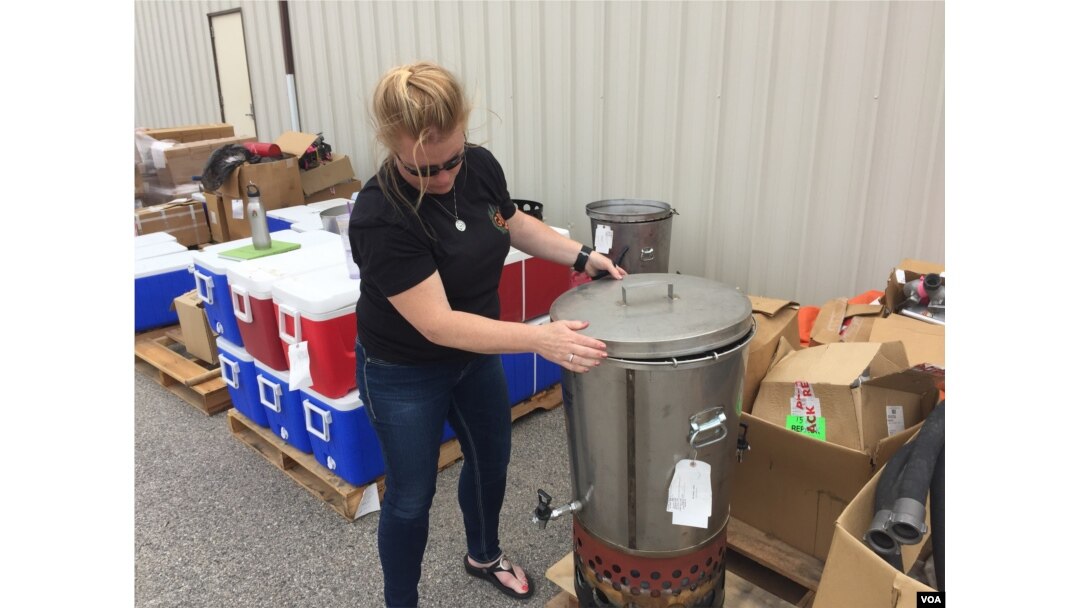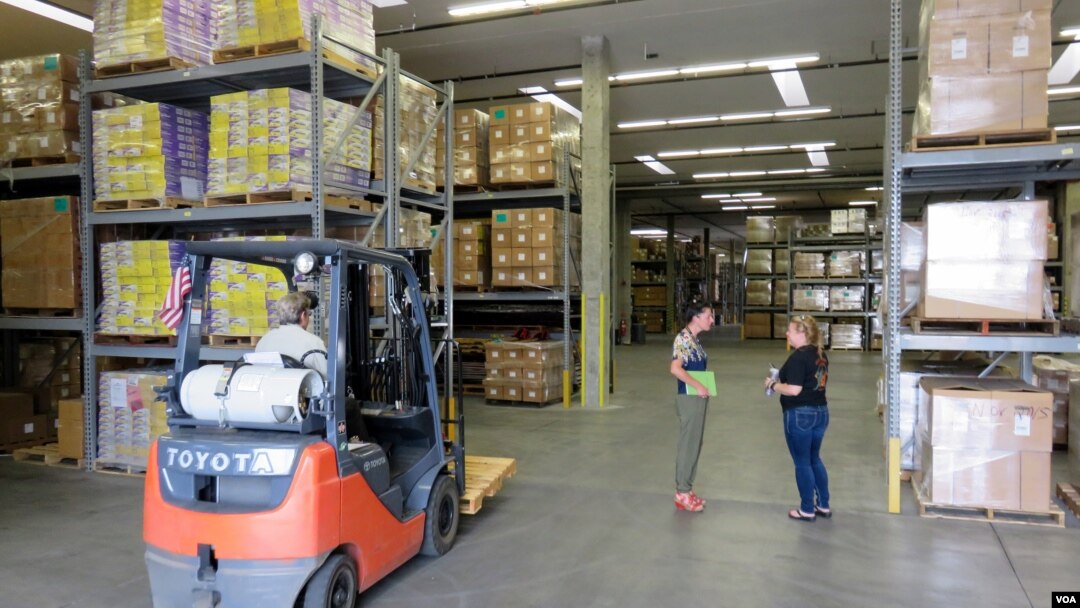Numerous large wildfires have been burning this summer across the U.S. western region.
Most firefighters arrive on the scene of a wildfire with their own gear. But if they face an extended fight, they need a way to replenish their supplies. That typically comes from 16 unheralded – but vital – regional wildfire storehouses - called caches www.nifc.gov/cache - operated by the U.S. Forest Service, Bureau of Land Management and partner states.
The Great Basin Cache at the edge of the Boise Airport in Idaho is one of the largest support centers in the national network. It holds millions of dollars worth of inventory waiting to be shipped out on demand.

Have you seen a coffee maker the size of an old galvanized garbage can? This model of propane-heated urn brews 20 gallons at a time for fire camp, July 2015. (VOA/T. Banse)
Popular items
The most popular item, according to assistant manager Nicole Hallisey, is AA batteries. More than 850,000 of those went out of here last year, mostly to power hand-held radios.
Hallisey also ships out a lot of pocket-sized, 110-page notebooks of references and safety checklists. Known as the Incident Pocket Response Guide, the booklet is now mandatory equipment for wildland firefighters
"You know, we all are very good at remembering things," she pointed out. "But when we're under pressure, it's always best to have something to come back to."
Among the other best-sellers are collapsible water jugs called cubitainers, especially the 19-liter jug. Hallisey said that one is a favorite, "because, 'No water, no work,' as we like to say when we’re on the line.”
She spoke from experience, having worked on an elite "hotshot" fire crew before coming to the Cache. So she knows that coffee ranks right up there with water. Fire camp cooks can order a big coffee maker ... a propane-heated urn that brews 75 liters at a time, in what looks like an old galvanized garbage can.
“And depending who’s making the coffee, it could taste like it was brewed in an old galvanized garbage can!” she noted with a laugh.
Technician Justin checks high-tech, portable weather stations before they are packed up for the next incident, July 2015. (VOA/T. Banse)
Portable weather stations
Another wing of the complex ships out portable, satellite-connected weather stations. Electronics technician Justin Dopp said these are sent to large, backcountry fires to provide accurate spot weather forecasts.
"Usually these weather stations are about the second most important thing to set up," he explained. "They have to establish communications first, get radio techs out there and get repeater sites set up. Then weather is about the next most important thing."
With a couple taps on a radio keypad, a firefighter can get a personal weather readout from the remote, portable station.
In an adjacent building, storehouse staff assemble kits to truck in or parachute to remote fire camps. Those include first aid packages, chainsaw boxes and food.
Fire cache staff take pride in how much of the gear they send out gets returned for re-use - not including consumables such as food, checklists or toilet paper, of course.
Hoses, pumps, chainsaws and camping gear get cleaned, refurbished and tested before being placed back on the warehouse shelves for the next wildfire.
Hallisey said the Great Basin Cache issued more than $38 million worth of firefighting supplies last year. By the end of fire season, they’d gotten more than $35 million worth of gear back. With a very active fire season underway this year, a lot of those supplies already are being used by firefighters on the front lines.


